Dung Gate
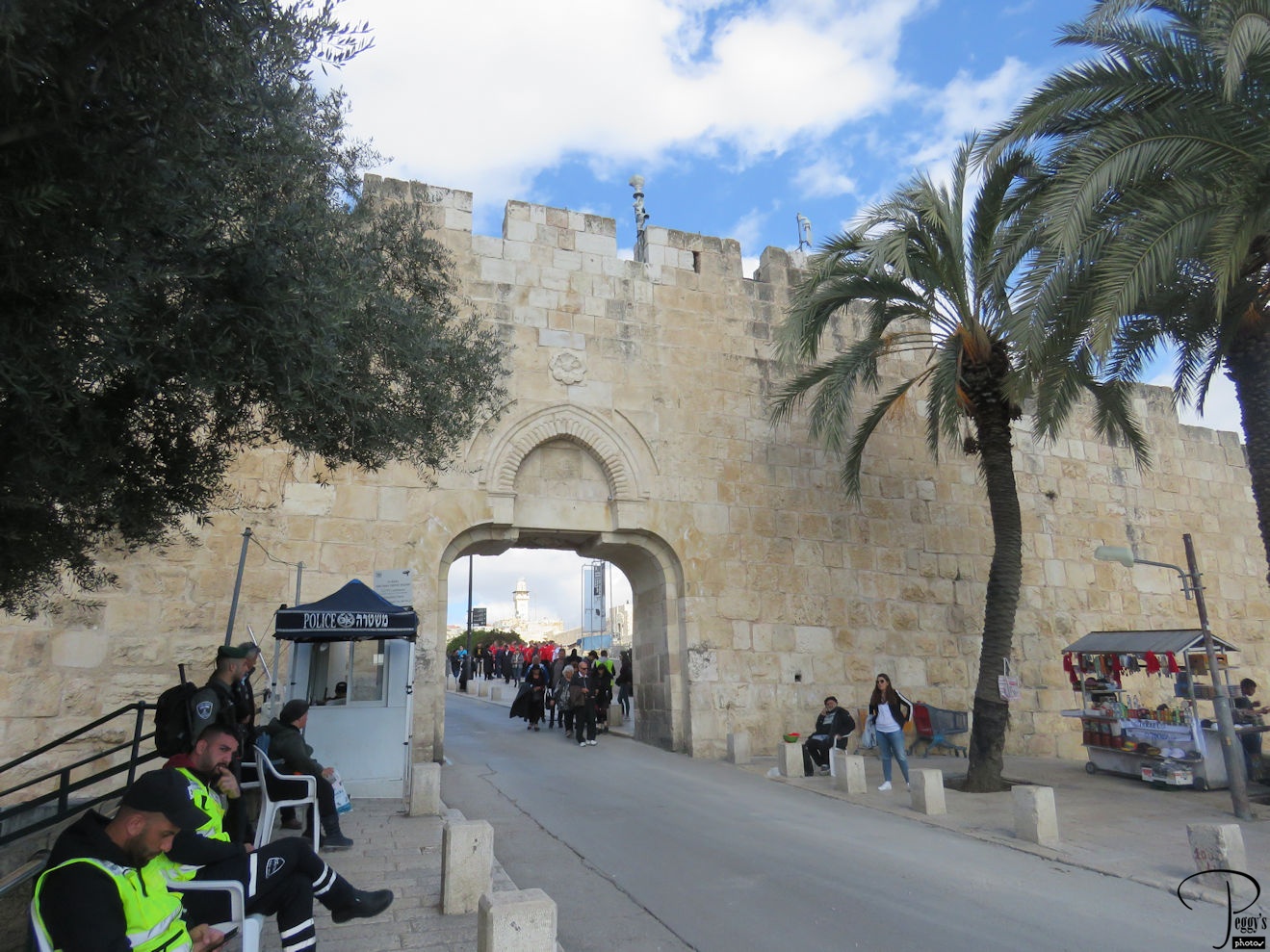
Day 14: The last day on my trip. On my agenda was a visit to the Temple Mount in the Old City of Jerusalem and then a Mount of Olives tour. I thought that the easiest way to reach the Temple Mount was through the Dung Gate, the same gate that you go through to reach the Western Wall. My taxi driver told me that the gate would be open to the Temple Mount at 12 p.m. I should have checked the time, which you can do and also the days when you can go there on the internet. That the gate didn’t open until 12:30 p.m. made me think that I had my directions wrong as to where the bridge to the Temple Mount was. I did ask about 10 people where the bridge and its gate was and got 10 different answers and was sent in the wrong direction many times. There was a tourist office nearby but it was closed, so no answers there.

Dung Gate
Bar Mitzvahs–Movie
While trying to find my way, I got to witness a number of bar mitzvah groups that were on their way to the Western Wall. I was told that a bar mitzvah parade goes on almost every day here. It was fun to watch.

Bar Mitzvahs–Movie
Entrance to the Bridge
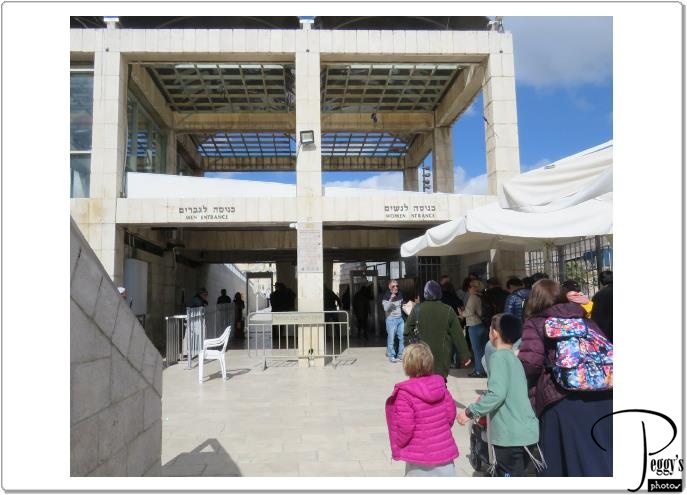
I finally saw people walking on the bridge at 12:30 p.m. I followed the bridge back from the Western Wall Plaza and finally found the gate to it. It is to the right of the women’s line to the Western Wall. The gate is open only when you can go to the Temple Mount, so it is easy to miss it when it is closed, as I did. By the order of the Rabbi of Jerusalem, Jews are not allowed on the Temple Mount. Jewish tradition regards the Temple Mount as entry to the Holy of the Holies, where God’s presence dwells. To be on the Temple Mount would mean stepping on sacred ground.

Entrance to the Bridge
Mughrabi Bridge
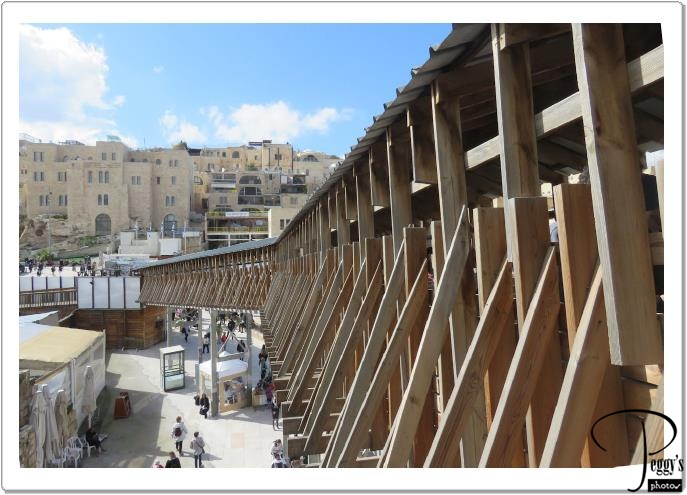
The Mughrabi Bridge to the Temple Mount.

Mughrabi Bridge
Al Aqsa Mosque
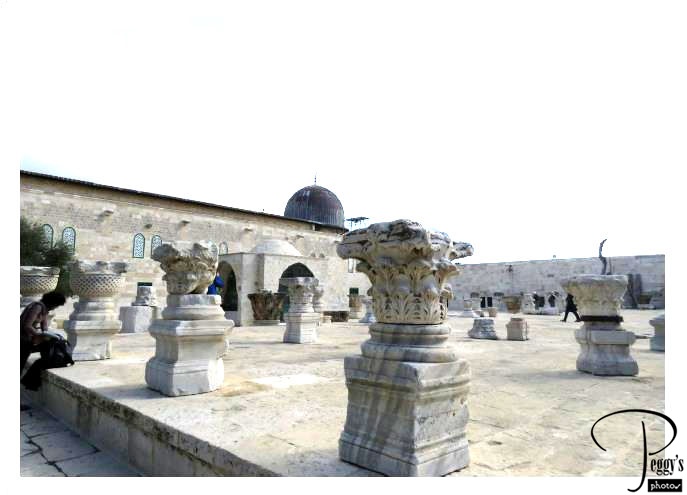
The Al Aqsa Mosque on the Temple Mount is the third Holiest site in Islam. “Muslims believe that Muhammad was transported from the Sacred Mosque in Mecca to Al Aqsa during the Night Journey.”

Al Aqsa Mosque
Dome of the Rock
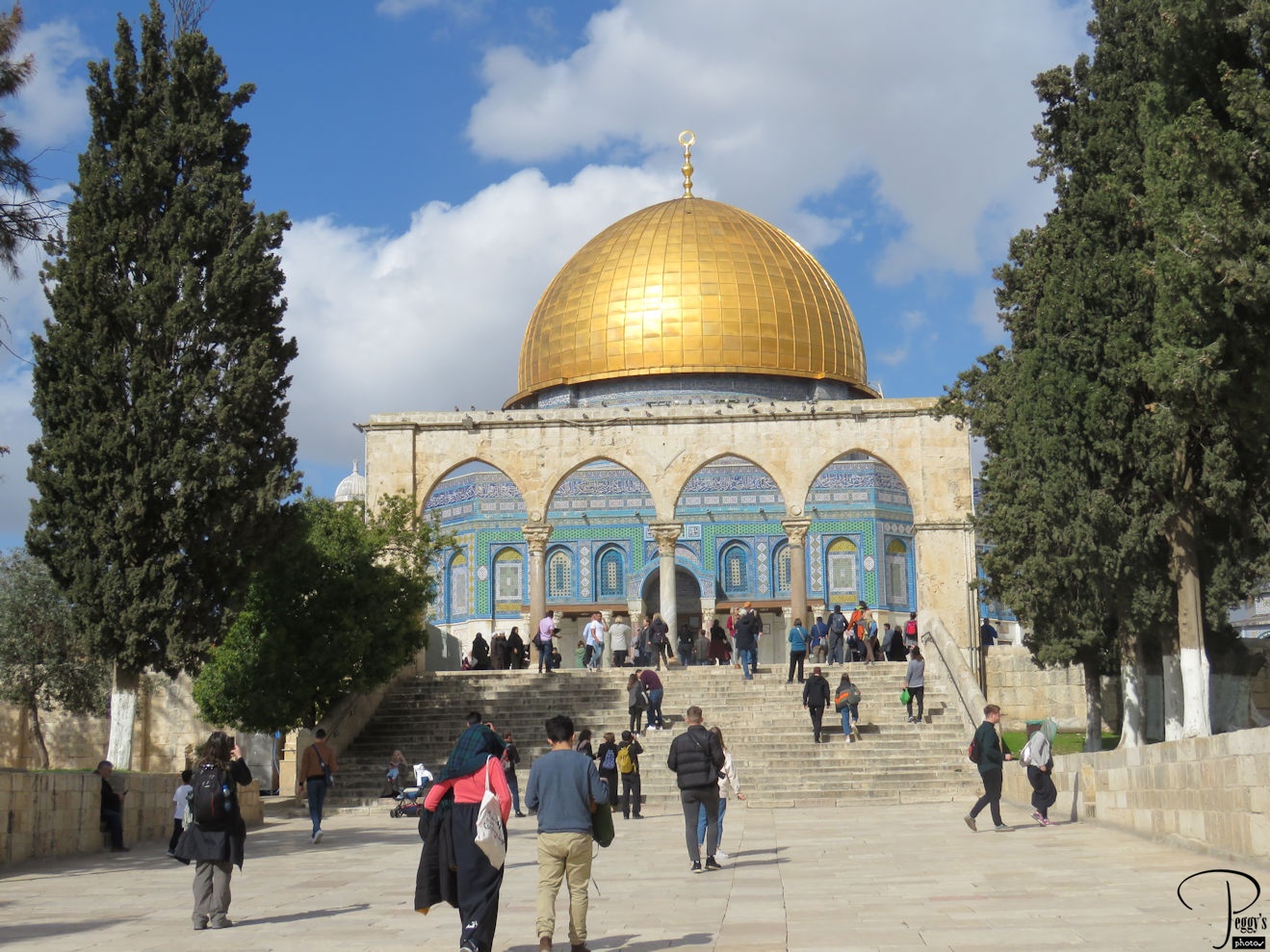
The Dome of the Rock on the Temple Mount was completed in 691–692 AD and built on the site of the Second Jewish Temple which was destroyed by the Romans in 70 AD.

Dome of the Rock
Dome of the Rock
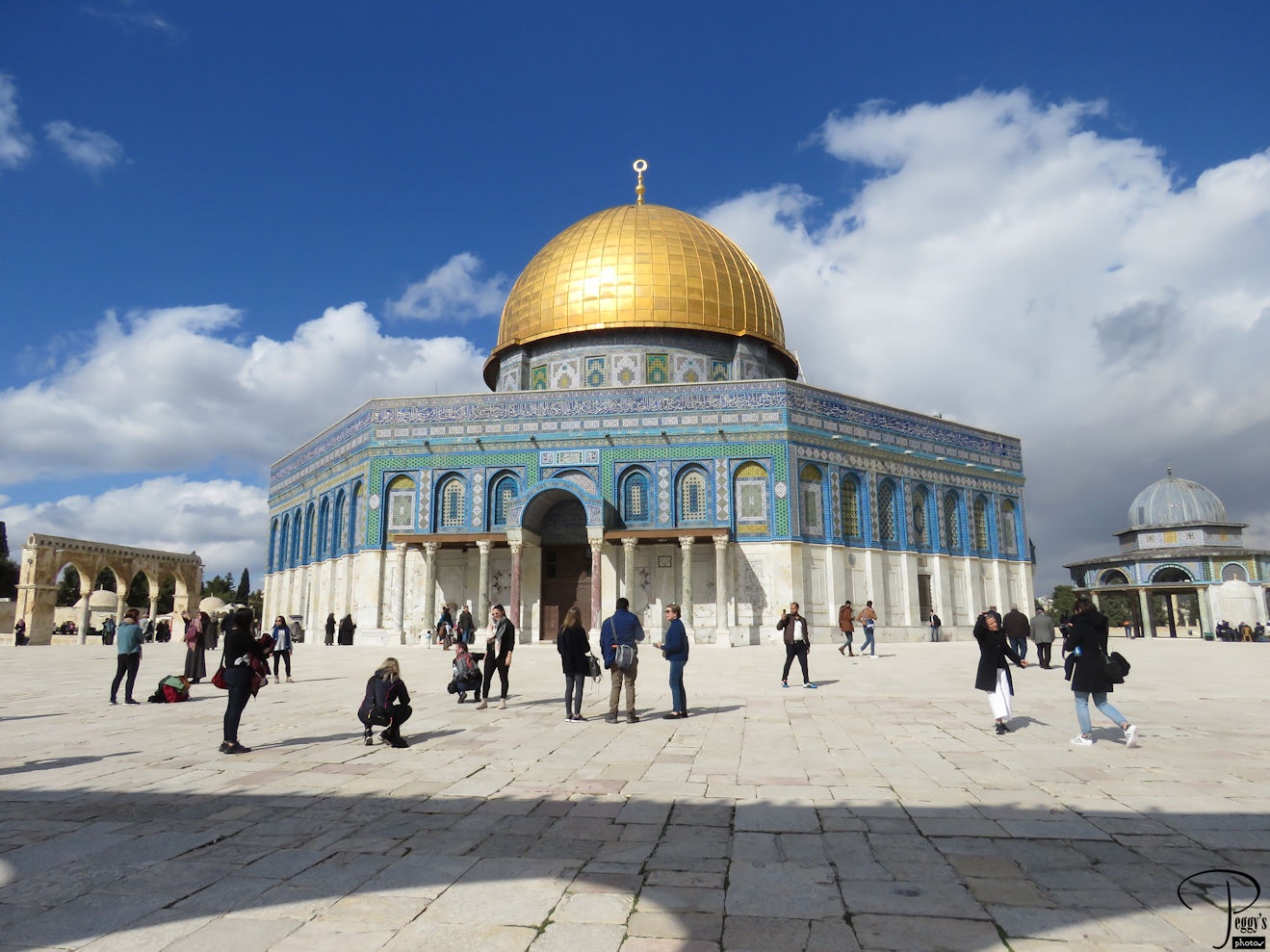
A full view of the beautiful Dome of the Rock.

Dome of the Rock
Dome of the Chain
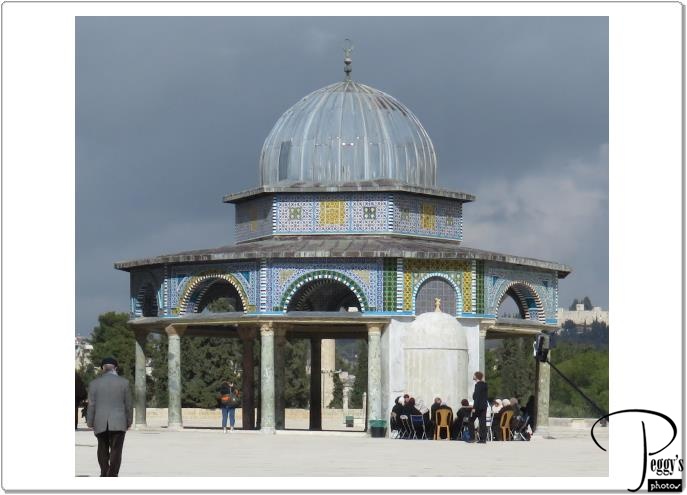
Next to the Dome of the Rock is the Dome of the Chain, a prayer house.

Dome of the Chain
Temple Mount
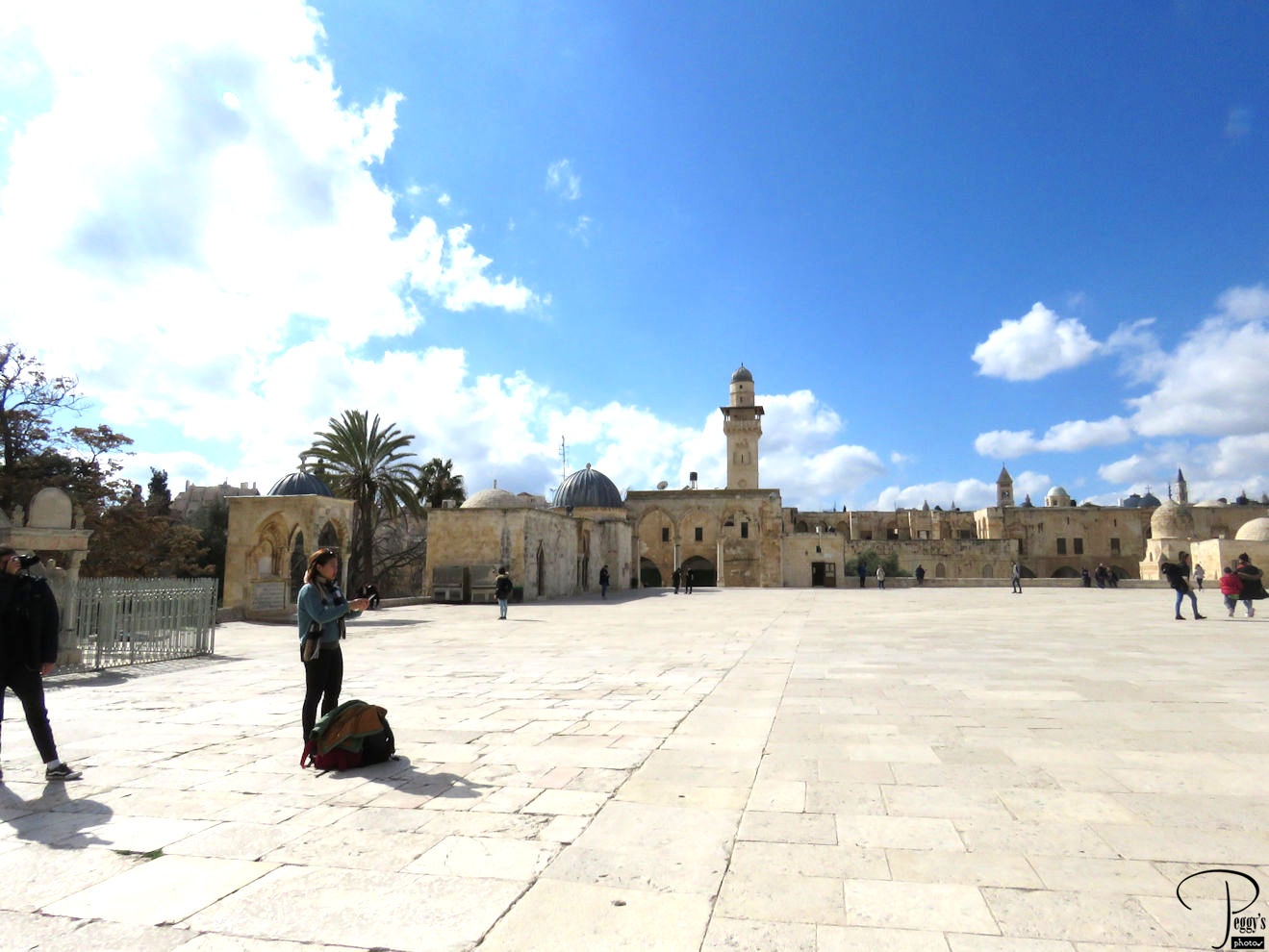
The Temple Mount covers a large area. I was walking around it, then was trying to figure out where the exit was, probably the same place I came through on the bridge and I started to walk back to it. However, a couple of guards told me that from where I was that I couldn’t walk over to it. So instead of completely backtracking, I tried to find another exit. I saw some guards near a tunnel and asked them if I could find a taxi if I walked through it. They said yes so I walked through narrow passages until I saw a sign saying “Lions’ Gate Street” and then I knew where I was as I was at Lions’ Gate two days earlier. I don’t know if you can go to the Temple Mount through the Lions’ Gate in the other direction as it might be only for Muslims to enter this way.
I have put my photos of the Temple Mount on a slideshow. Go to https://www.peggysphotos.com/temple–mount/ (Slide Shows, Middle East, Israel/West Bank/Jordan, Jerusalem, “Temple Mount”).

Temple Mount
Jaffa Gate
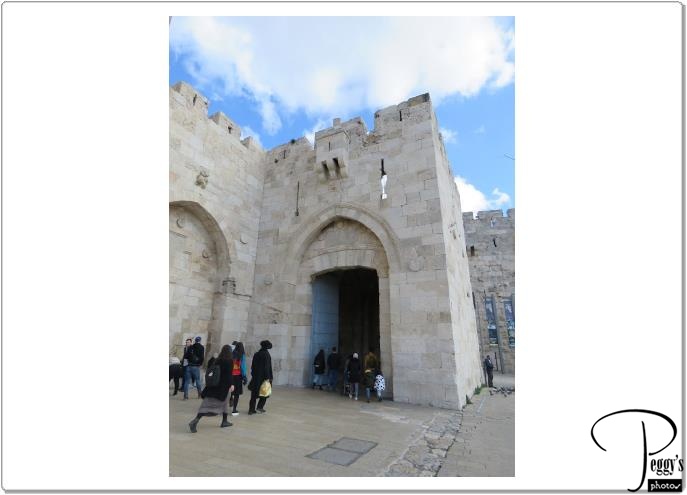
After visiting the Temple Mount, I had a short time before I had to be at the Jaffa Gate on the other side of the Old City to join a tour to the Mount of Olives. Because of all the road congestion around the Old City walls, my taxi driver said that it probably would be quicker if I just walked through the Old City. I said probably not as it is too easy to get lost in it. There were six of us plus our tour guide on our Mount of Olives tour. We went by bus to the top of the Mount of Olives.

Jaffa Gate
Chapel of the Ascension
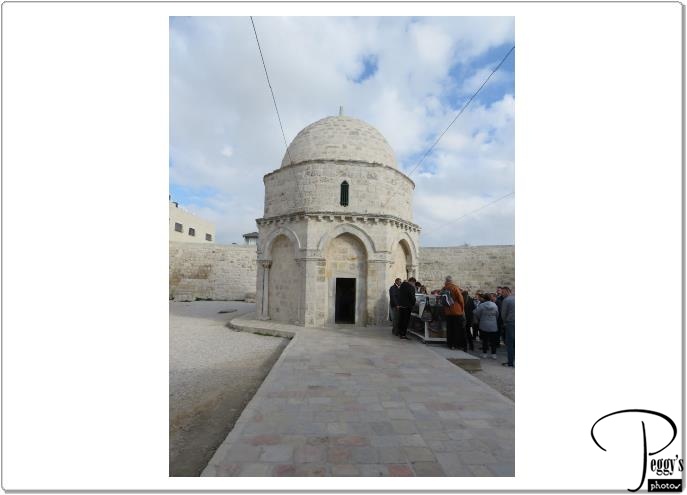
Our first stop on the Mount of Olives was at the Chapel of the Ascension which is on the spot believed that Jesus ascended to Heaven after His resurrection.

Chapel of the Ascension
Rock of the Ascension
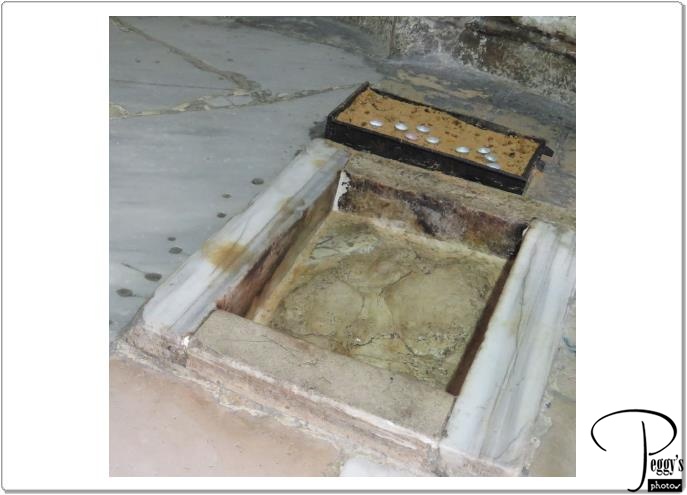
The chapel is built over the Rock of the Ascension which is believed to contain the right footprint of Jesus.

Rock of the Ascension
Church of Pater Noster
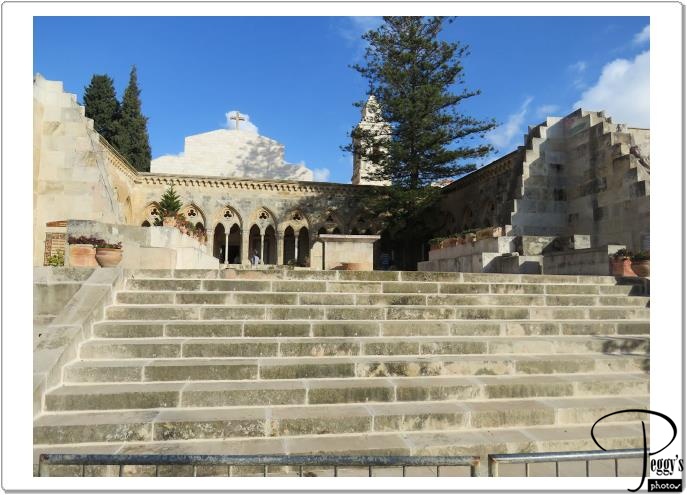
From the top of the Mount of Olives, we walked down the hill to the Church of Pater Noster, a Roman Catholic church, located right next to a partially reconstructed a 4th–century Byzantine church. One very nice and unusual thing on the Mount of Olives steep hill was that there were rails on both side of the road. The Mount of Olives is a place of pilgrimage and probably people of all ages make the pilgrimage. The rails help older people make the trek.

Church of Pater Noster
Church of Pater Noster
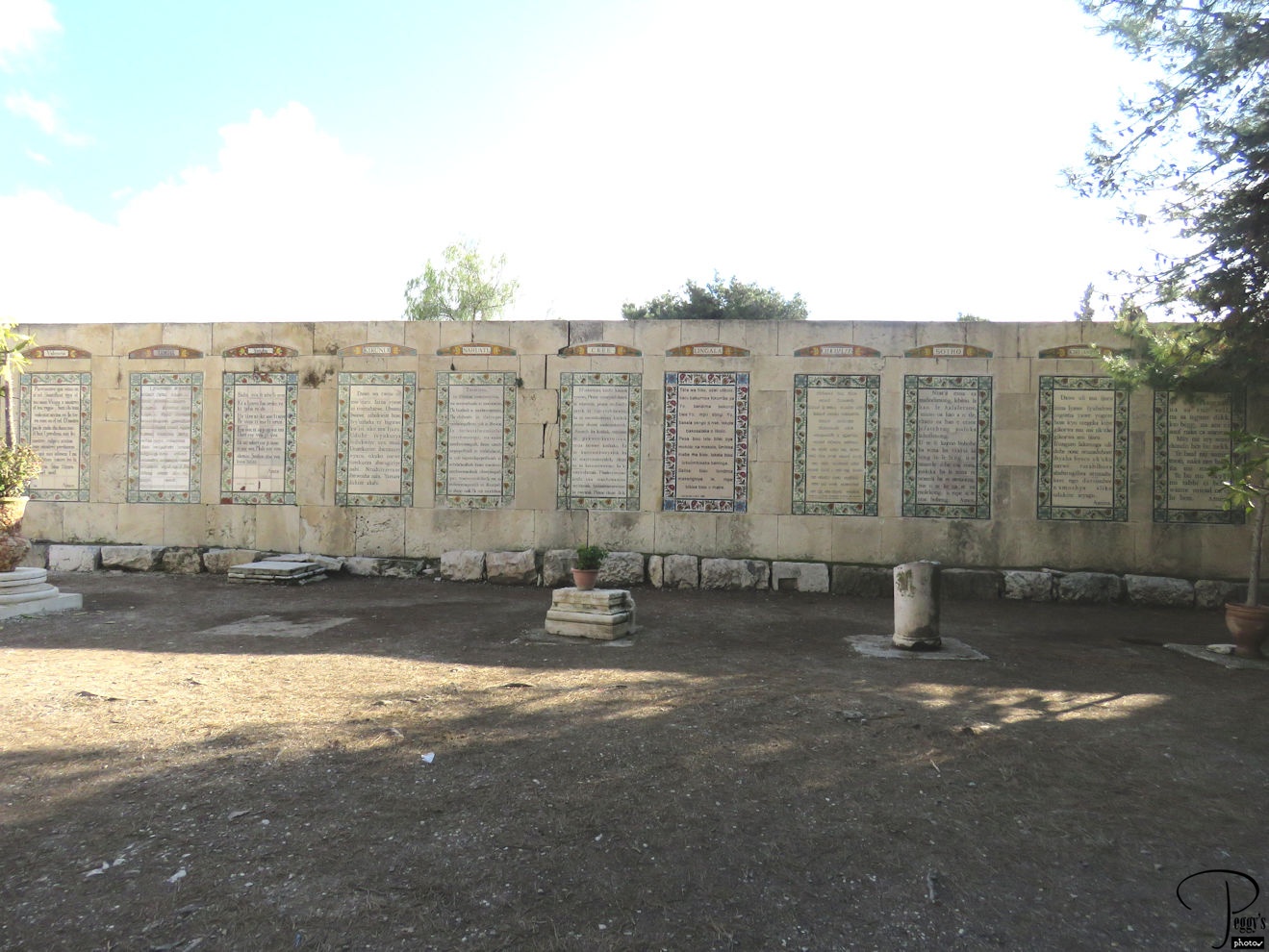
During the Crusades, the site became associated with the teaching of the Lord’s Prayer. In the second half of the 19th century, French Princess Aurelia Bossi de la Tour d’Auvergne bought the site and founded a Carmelite convent here. She also had the Lord’s Prayer translated into 39 languages. Today, there are over 140 languages on tiled panels of the Lord’s Prayer.

Church of Pater Noster
Church of Pater Noster
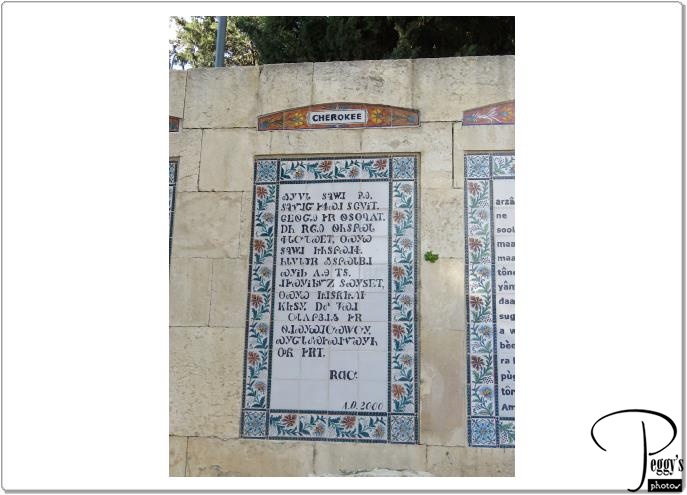
The Lord’s Prayer in Cherokee. There was also one in Cree.

Church of Pater Noster
Church of Pater Noster
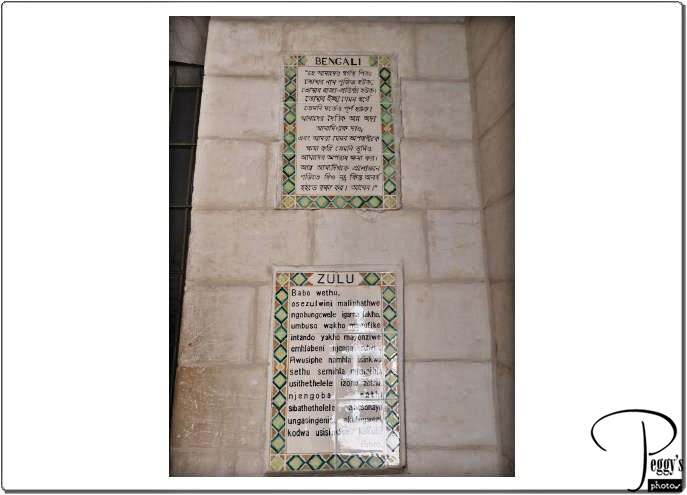
Also, the Lord’s Prayer in Bengali and Zulu.

Church of Pater Noster
Church of Pater Noster
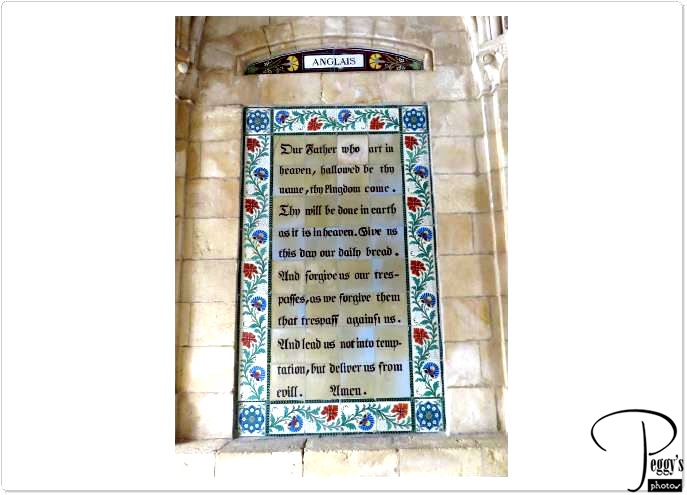
The Lord’s Prayer in English.

Church of Pater Noster
Church of Pater Noster

A cave was found on the site which is believed to be where Jesus taught a small group.

Church of Pater Noster
Mount of Olives Overlook
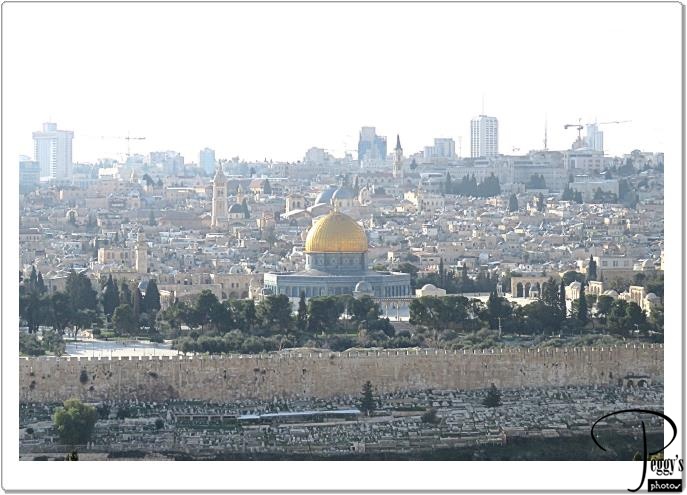
We next went to an overlook that had a view of the Old City of Jerusalem and the golden dome of the Dome of the Rock on Temple Mount and the city wall. Below the city wall is the Mamilia Cemetery which contains remains from the early Islamic period.

Mount of Olives Overlook
Dome of the Rock
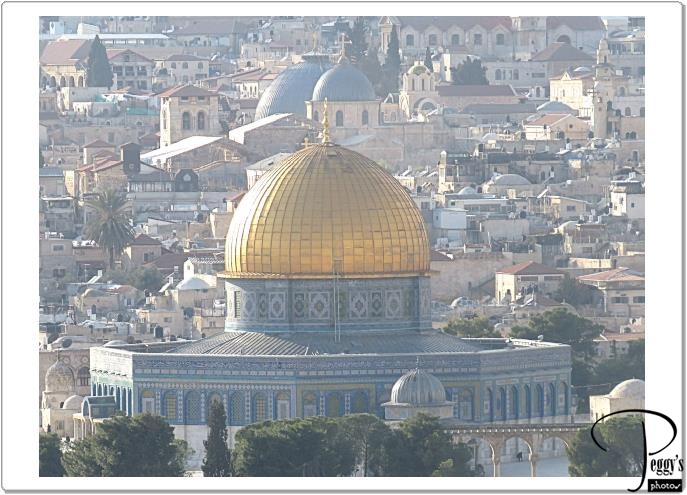
The golden dome of the Dome of the Rock on the Temple Mount.

Dome of the Rock
Church of Mary Magdalene
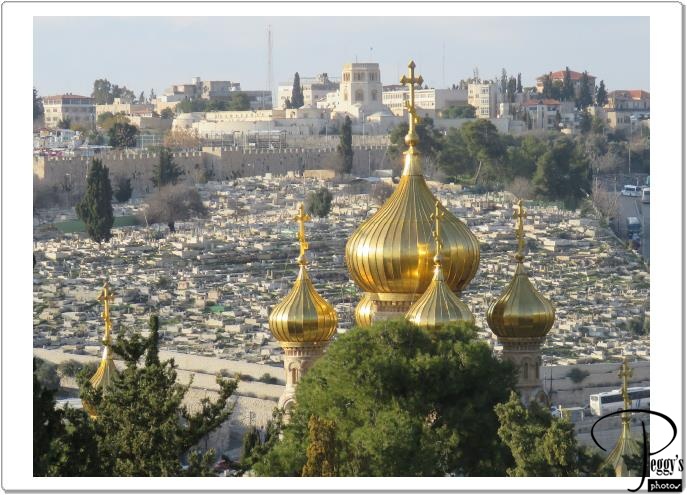
Also seen from the overlook are the golden onion domes of the Church of Mary Magdalene, a Russian Orthodox Church built in 1886 by Tsar Alexander III and his brothers to honor their mother, Empress Maria Alexandrovna.

Church of Mary Magdalene
Tomb of the Virgin Mary
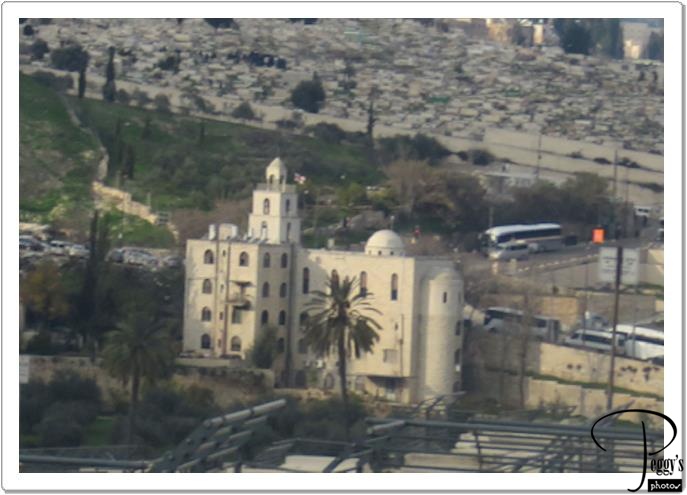
Also from the overlook you can see the Church of the Sepulchre of Saint Mary where, as believed by Eastern Orthodox Christians, is the tomb of the Virgin Mary.

Tomb of the Virgin Mary
Necropole
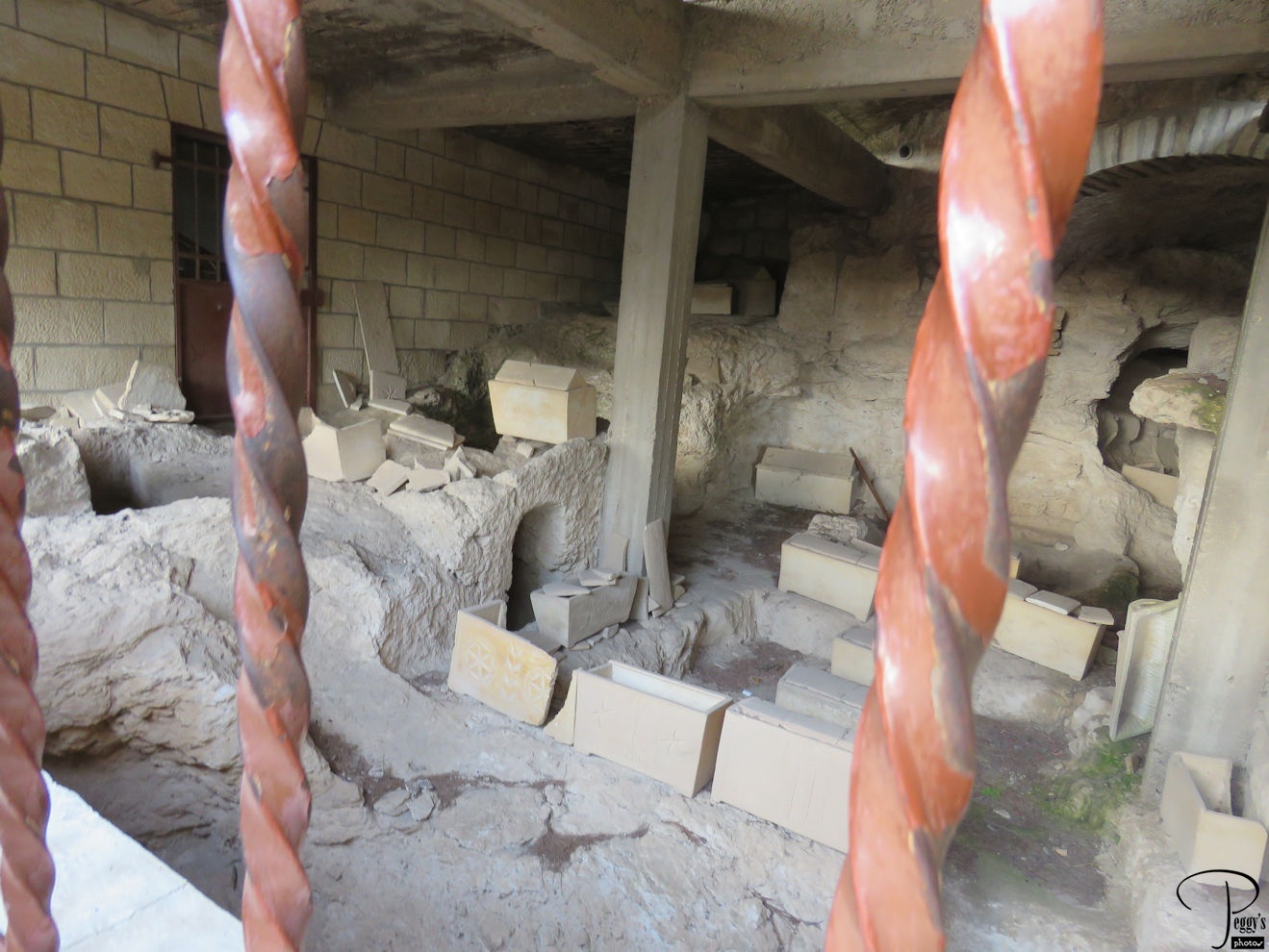
We visited the Necropole, which is made up of ancient catacombs built before the 9th century BC to the 7th century BC and a very large cemetery. In the photo there are ancient ossuaries, containers in which the bones of the deceased are placed.

Necropole
Necropole
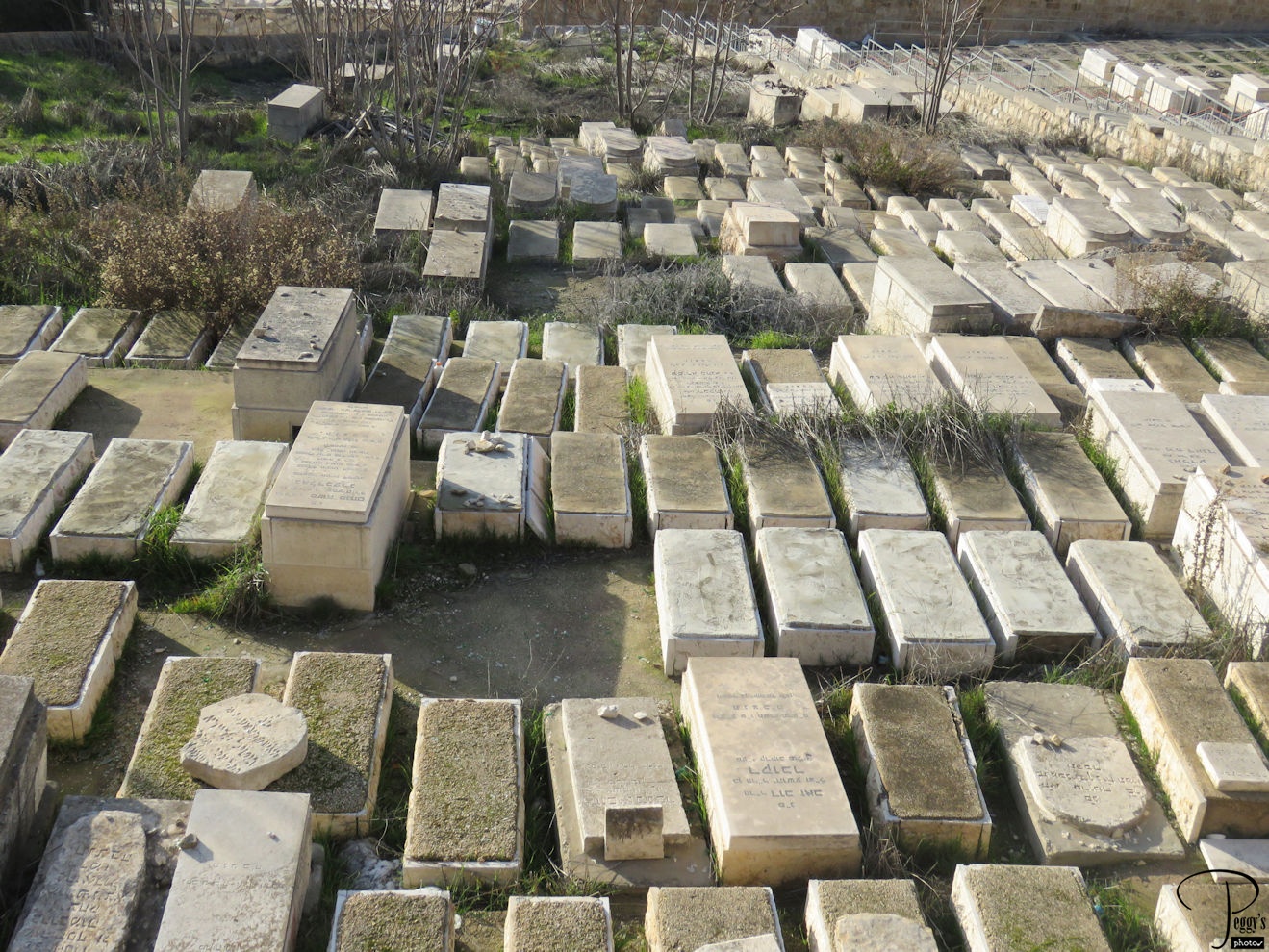
In the very large Jewish cemetery in the Necropole there are burials from about 3,000 years ago in the days of the First Temple.

Necropole
Dominus Flevit Church
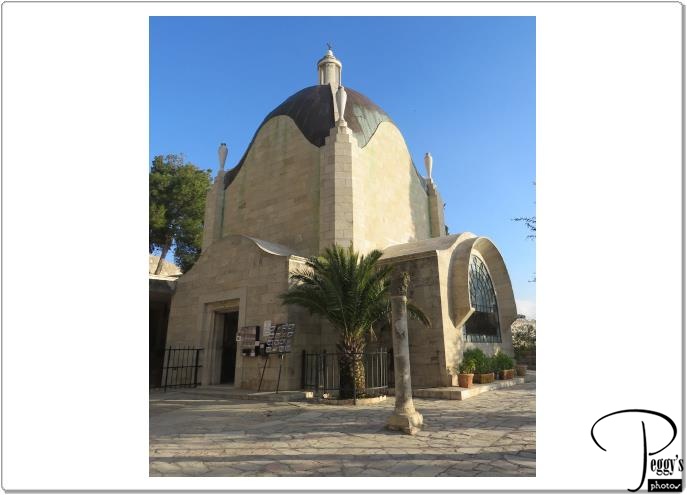
Our next stop was at the Dominus Flevit Church, a Roman Catholic church built 1953–55. It is built to resemble a tear drop, recalling Jesus weeping over the fate of Jerusalem.

Dominus Flevit Church
Church of All Nations
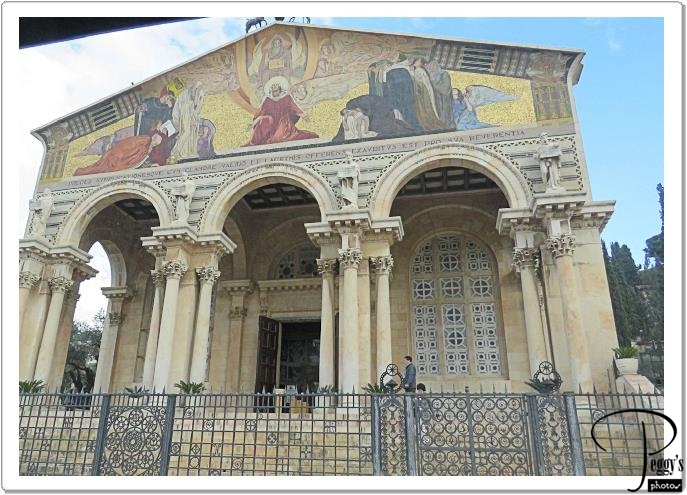
Farther down the hill, we visited the 1924 Church of All Nations that is besides the Garden of Gethsemane. The church enshrines bedrock where Jesus is said to have prayed before His arrest the night before He was crucified.

Church of All Nations
Church of All Nations
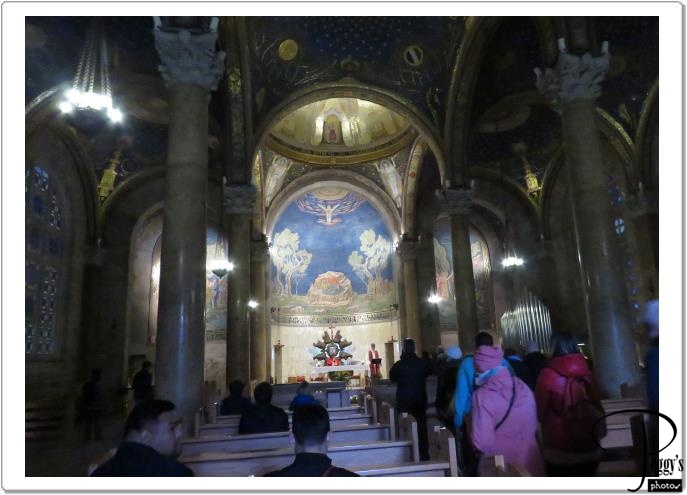
Inside the Church of All Nations.

Church of All Nations
Garden of Gethsemane
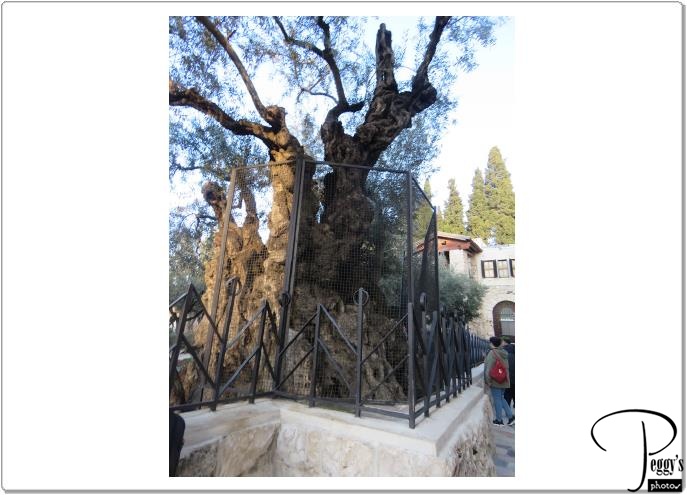
The photo shows one of the olive trees planted in the 12th century BC in the Garden of Gethsemane, where Jesus underwent the Agony and was arrested the night before His crucifixion. The tour continued down the hill and across the street to the Church of the Sepulchre of Saint Mary which would be the end of the tour and where I didn’t go as I had to catch a taxi to take me back to the hotel to pack for my trip home this evening.
I have put my photos of the Mount of Olives on a slideshow. Go to https://www.peggysphotos.com/mount–of–olives/ (Slide Shows, Middle East, Israel/West Bank/Jordan, Jerusalem, “Mount of Olives”).

Garden of Gethsemane
Going Home
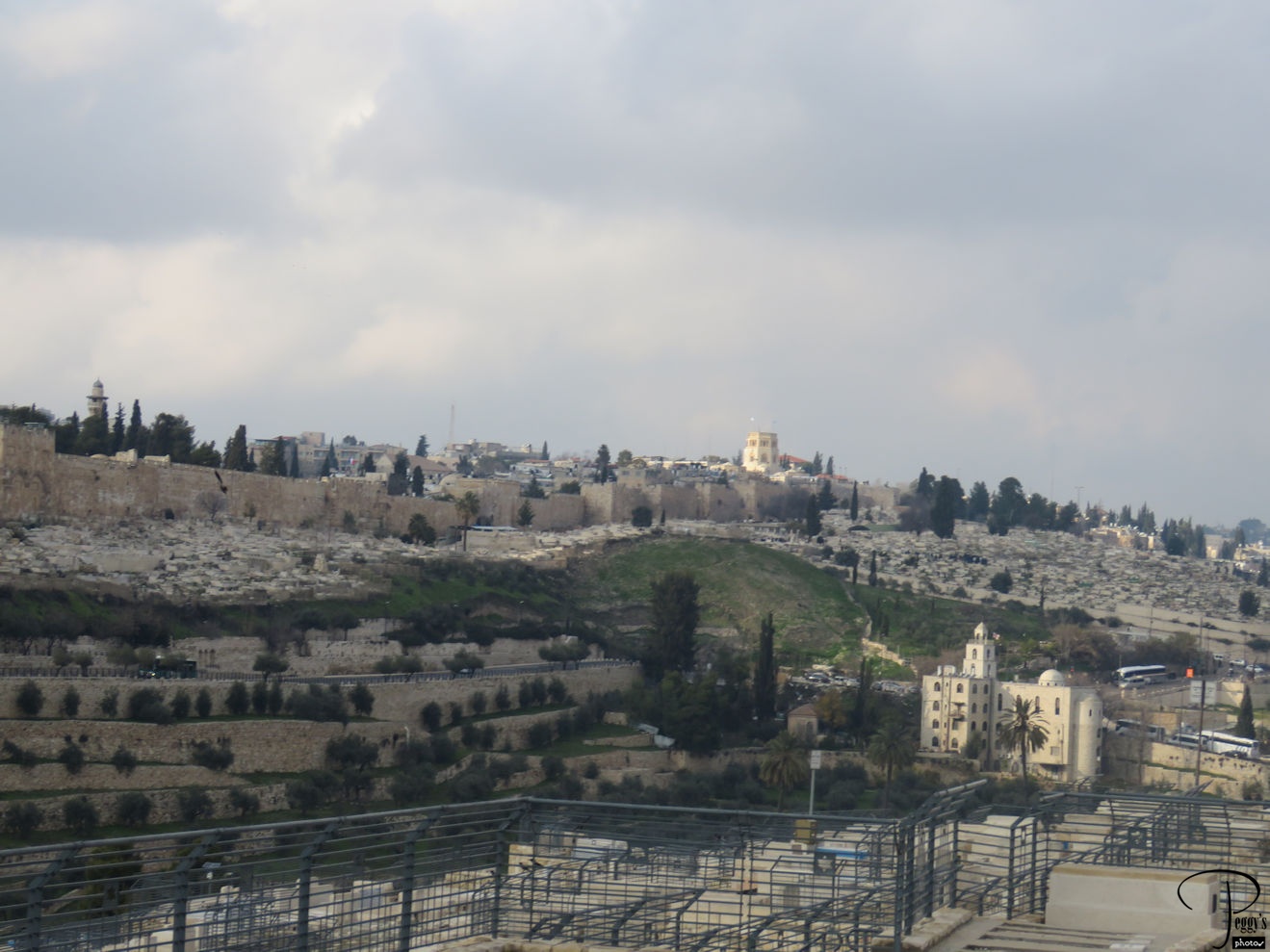
I am now going back home to Los Angeles and saying goodbye to Israel. My shuttle driver to the airport in Tel Aviv came exactly on time to the minute. I flew from Tel Aviv to San Francisco on a 14–hour flight and then from San Francisco to Los Angeles. I had upgrades to three of my four flights to and from Israel, but not on the 14–hour flight to San Francisco, even though I was first on the upgrade list, and survived the flight in economy plus––lots of leg room in a very narrow seat. Shuttles are not allowed to pick up from the curb at LAX, so I rented a cart, put all my luggage on it, and walked about 15 minutes to the special lot to find my shuttle driver and then it was to my home and sunshine.
